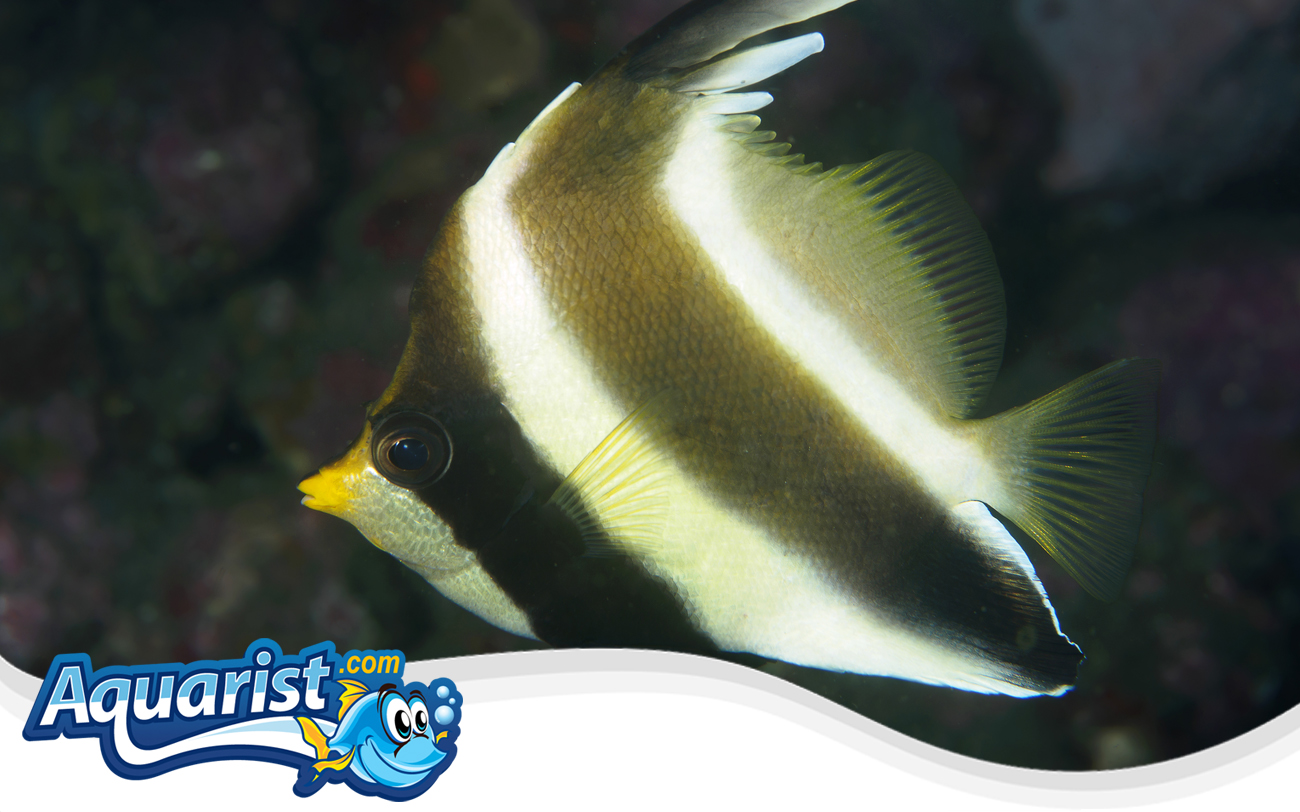Overview
- Native to the Indo-Pacific, including the Red Sea, Indian Ocean, and Pacific reefs.
- Easily identified by its black-and-white striped pattern with a golden-yellow snout.
- Often mistaken for the Moorish idol due to its elongated dorsal fin resembling a pennant.
- Commonly found in pairs or small groups in coral-rich lagoons and reef slopes.
- Popular among aquarists for its striking appearance and social behavior.
Feeding
- Omnivorous diet, feeding on plankton, small invertebrates, and coral polyps in the wild.
- Accepts a variety of aquarium foods, including high-quality flakes, pellets, and frozen fare like mysis shrimp and brine shrimp.
- Requires supplemental algae-based foods and spirulina to maintain optimal health.
- Multiple daily feedings are recommended to support its high metabolism.
- Foraging behavior includes picking at rock surfaces for small organisms.
Habitat
- Typically inhabits reef slopes, outer reef areas, and shallow coral lagoons with moderate water flow.
- Prefers an aquarium setup with open swimming space and live rock for shelter.
- Requires stable water parameters and a well-established biological filtration system.
- Best suited for large tanks (minimum 125 gallons) due to its active swimming nature.
- Not always reef-safe, as it may nip at coral polyps and sessile invertebrates.
Fish Care
- Optimal water temperature: 74-80°F (23-27°C).
- Ideal pH range: 8.1-8.4, with a specific gravity of 1.023-1.026.
- Moderately hardy but requires pristine water conditions and regular maintenance.
- Can be prone to stress when housed with aggressive tank mates.
- Regular water changes and strong filtration help maintain long-term health.
Compatibility
- Generally peaceful but may become territorial toward other butterflyfish.
- Best suited for community aquariums with tangs, wrasses, and clownfish.
- Should be housed in pairs or small groups if space permits.
- Not recommended for fully reef-safe setups due to its tendency to nip at corals.
- Should not be housed with aggressive fish that may intimidate or outcompete it.
Aquarium Behavior
- Active and social swimmer, frequently seen exploring the mid-water column.
- Forms bonds with tank mates and often interacts with conspecifics.
- Can be shy initially but quickly adapts to well-maintained environments.
- Engages in natural foraging, picking at rocks and substrates for small food particles.
- Thrives in a stable, well-maintained aquarium with ample swimming space.


